How To Launch on Product Hunt Multiple Times
There are thousands of Product Hunt Launch guides on the internet. “How to Launch on Product Hunt”, “When to Launch on Product Hunt”, “The Ultimate Product Hunt Launch Guide”, “10 Steps To a Successful Product Hunt Launch”... Not a day goes by without someone mentioning their PH launch on Indie Hackers. Everybody does it!
It sure seems like launching on Product Hunt is the highlight of a product release.
What’s the return on all that effort?
Judging by the sheer volume of threads and comments on the topic people expect great results. So is it worth a try? Let’s have a look at a couple of popular writeups.
This guy made $74.55 over four days from 1000 visitors. Doesn’t seem too bad, until you compare that with a professional’s daily rate and notice he also launched in six other places.
These guys got 450 upvotes from 100 sign-ups and 2000 visitors, and no mention of paying customers. It seems the number of upvotes bears no relation to the value of your product. Most upvoters will only read the description.
And these guys spent a lot of effort preparing their launch and contacting everyone they could about it. They got nearly 2000 visitors, 138 signups, and again, no mention of profits.
An Indie Hacker sent an email to 3830 users and got 1023 visits, 102 accounts and 2 paying customers at $5 a month.
I asked my friends on a private Slack channel. One said he got two paid customers.
I myself got over 1000 visitors. Tens of curious Hunters decided to sign up. I spent hours talking with them, it felt so good to receive their compliments. None of them paid.
It appears that blogging about your Product Hunt launch will drive more traffic to your page than the launch itself. And still, why would you care about the traffic? Traffic is a vanity metric. All that matters are your profits.
Is it useless?
Product Hunt is a Twitter or Facebook of sorts - a place you mindlessly check to get a quick dopamine boost before getting back to work. The products that thrive are the ones that draw attention and entertain, not solve problems. It’s unlikely launching your product on PH will make it magically start growing. That’s not to say it’s completely useless.
Side project
Frank from Early User Growth in lesson #5 writes:
Side projects can be vital to your user growth:
- You can hit the #1 spot on ProductHunt
- The press can pick up your side project
- It can drive 100s or 1,000s of new users
A side project from Uber was launched in just 4 countries and got over 300 press mentions locally - even though they only just launched in those countries a few weeks before.
Or, in the case of Early User Growth, it drove over 30,000 people to the website (and 1,200+ new sign-ups).
Frank uses his free email course to sell a video course. He boasts 2200 signups in total, and 1200 came from Product Hunt.
A humorous distraction
Here is a side project made by an Indie Hacker:
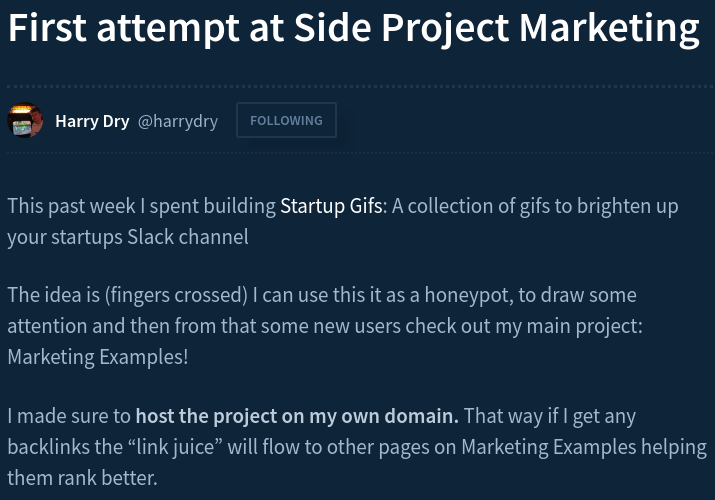
Here is the project itself, just a few gifs:
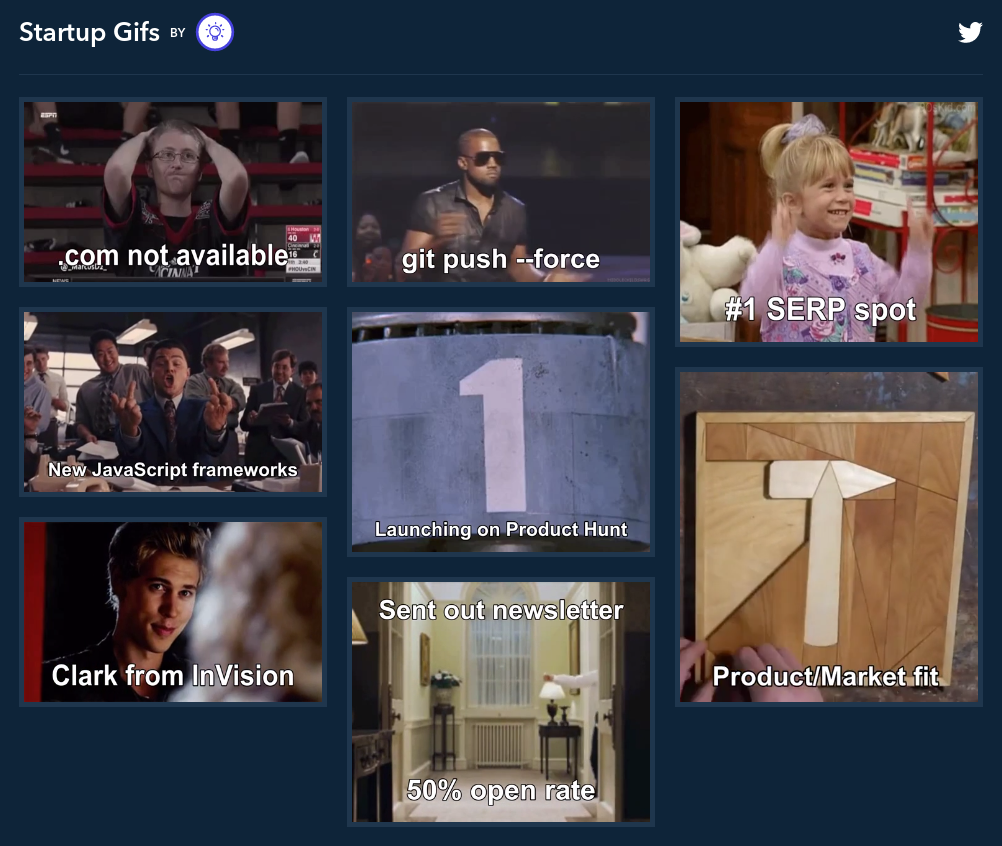
And the result:
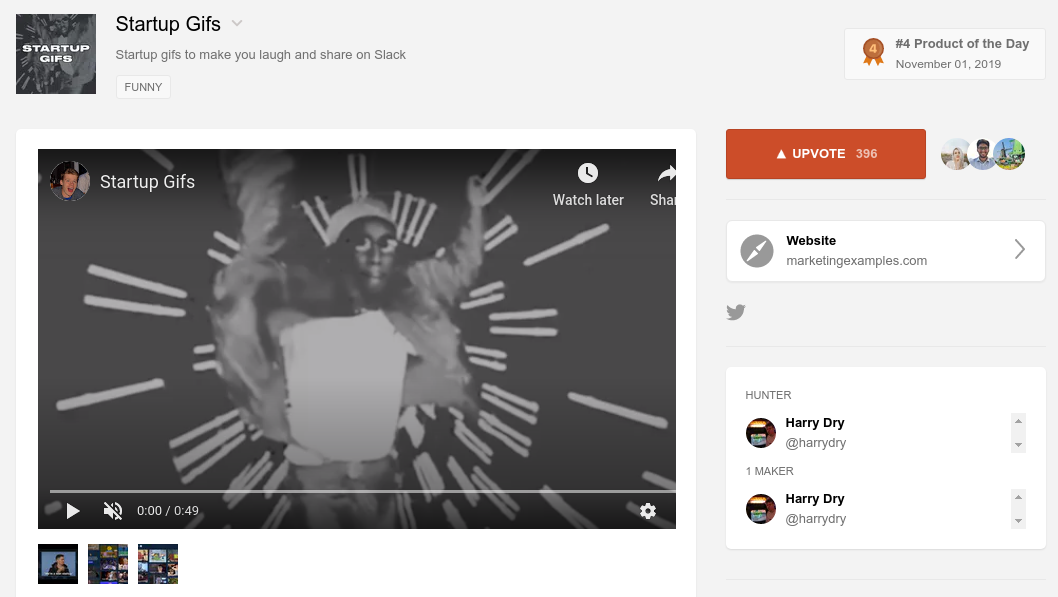
#4 product of the day.
And Ahrefs tells me that URL acquired 328 backlinks, 84% dofollow.
Fancy blog post
Dan Siepen recently got 3000-page visits and 400 newsletter signups from his campaign that included a Product Hunt launch. The product? A list of forty articles. Read more about how he executed his campaign.
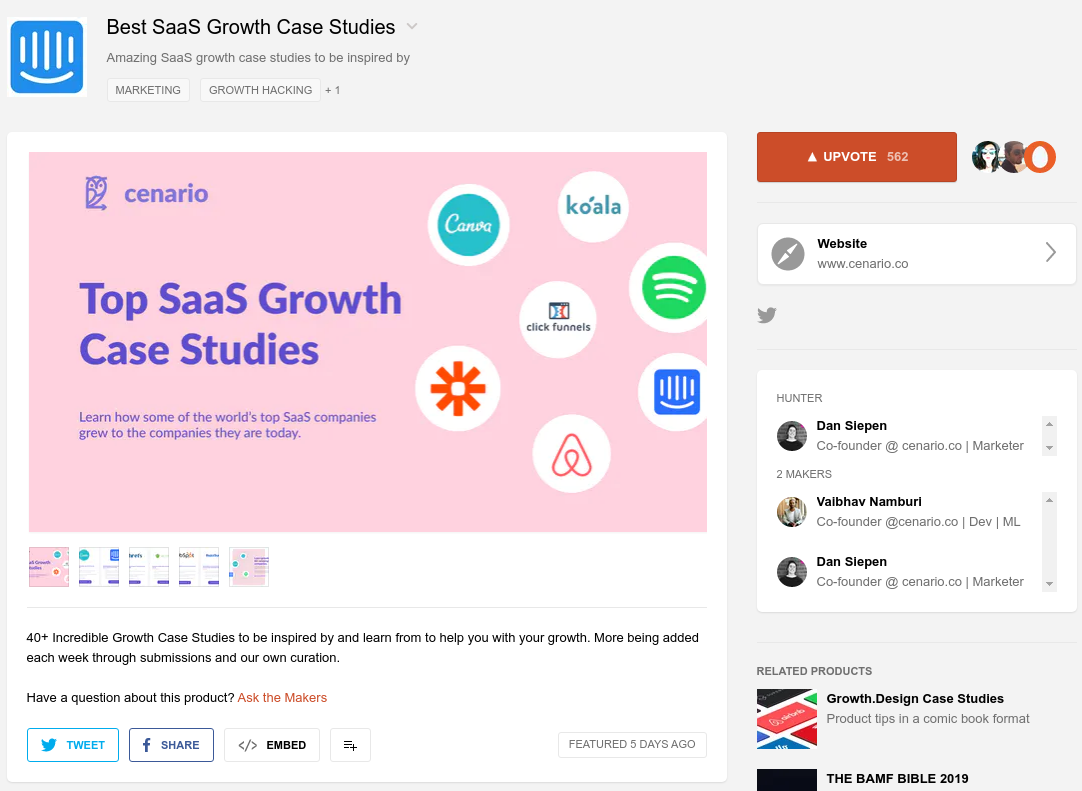
Dan is an expert growth marketer and made several Product Hunt launches before. Most for the same product:
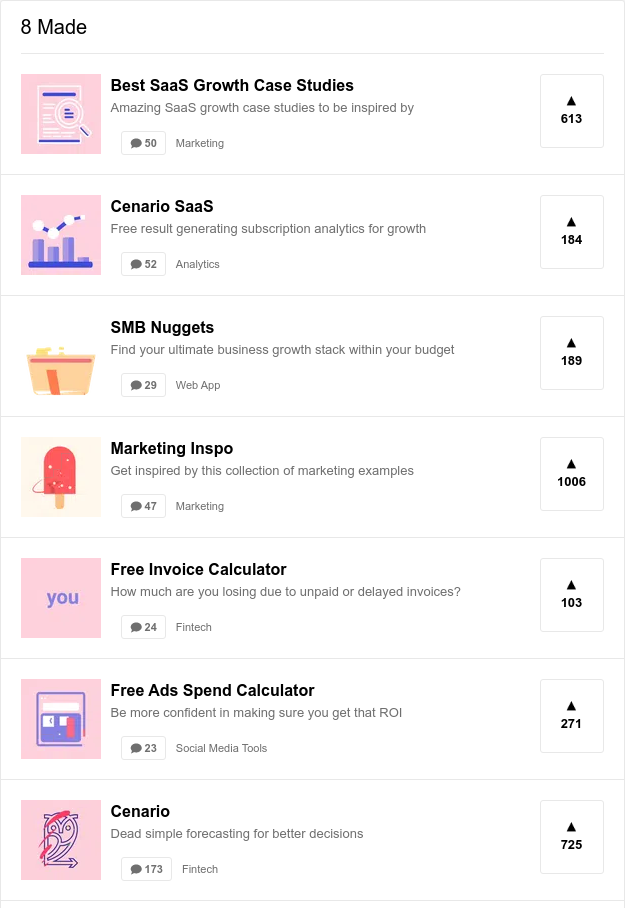
Free guides and newsletters get the most upvotes. Products? Not so much.
New Version
Chris Messina, the #1 Product Hunter, recently launched a new version of Slack:

They already had the copy and the screenshots. This launch looks like it took 15 minutes.
It didn’t get much attention, but I dare you to find an easier way to get in front of a few hundred eyeballs.
How to get started?
Give Product Hunt users what they want: a freebie that fills up time, but isn’t too demanding.
Make a side project. Make it free and entertaining. Insert CTAs for your money-making product in it. And then launch. Here are some examples:
- Calculator
- Email course
- Newsletter
- Non-obvious looking blog post
- A free subset of your main product
For newsletters, use email newsletter templates to make your work easier. And after you launch, make sure to stay around and reply to comments. If you don’t want to constantly refresh the page you can configure Syftento notify you whenever a new comment shows up.